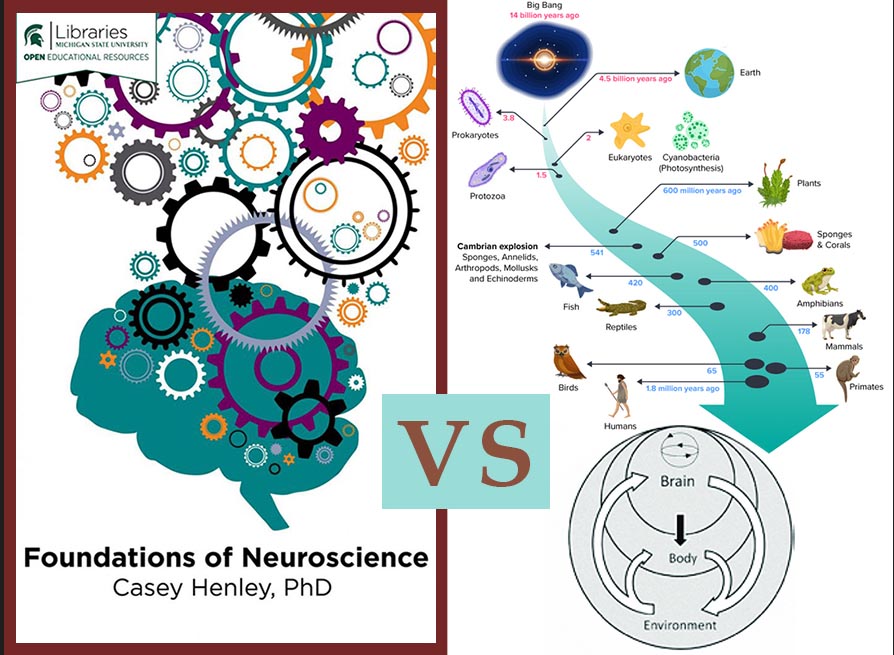Tuesday, 14 February 2023
Brain in pieces versus brain-body-environment resulting from a long evolutionary process

.
In 2021, Dr. Casey Henley, an assistant professor in the Department of Physiology at Michigan State University, published a free online book entitled Foundations of Neuroscience, intended for university undergraduate students. She deserves much credit for this initiative to make basic knowledge about neuroscience and the human brain available to this audience, as well as for the clarity of this book’s content and illustrations, which is exceptional for an introductory textbook in this field. This clarity carries over into the book’s overall structure, which follows a traditional model. It starts with chapters on the anatomy of the neuron, the ionic mechanisms of action potentials and the basics of synaptic integration. Next come chapters on the more general organization of the nervous system, including the various “sensory systems” and then the “motor system.” Lastly, there are chapters on “behaviour”, including phenomena such as motivation and reward, fear, stress and the behaviours associated with sexual differentiation. (more…)
From the Simple to the Complex | Comments Closed







